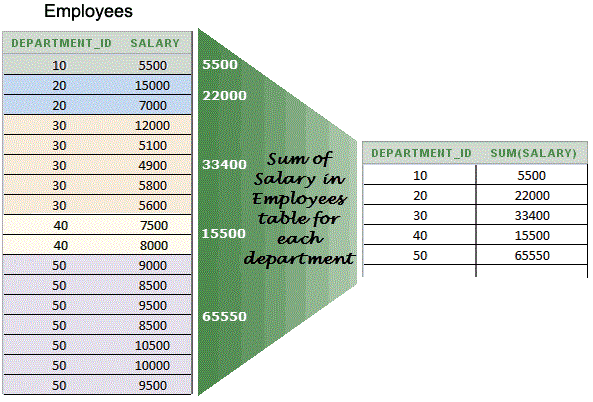
The SQL HAVING clause is used to do exactly this, to specify a condition for an aggregate function which is used in your query:
A HAVING clause in SQL specifies that an SQL SELECT statement should only return rows where aggregate values meet the specified conditions.It was added to the SQL language because the WHERE keyword could not be used with aggregate functions.
SELECT – GROUP BY- Transact-SQL. 03/03/2017; 14 minutes to read Contributors. In this article THIS TOPIC APPLIES TO: SQL Server (starting with 2008) Azure SQL Database Azure SQL Data Warehouse Parallel Data Warehouse

Free Oracle Magazine Subscriptions and Oracle White Papers: Oracle GROUP BY & HAVING Clauses: Version 11.1 : Basic Group By: GROUP BY is used in conjunction with aggregating functions to group the results by the unaggregated columns
WHERE clause introduces a condition on individual rows; HAVING clause introduces a condition on aggregations, i.e. results of selection where a single result, such as count, average, min, max, or sum, has been produced from multiple rows.





I know I need to have (although I don’t know why) a GROUP BY clause on the end of a SQL query that uses any aggregate functions like count, sum, avg, etc: SELECT count(userID), userName FROM users
The SQL language is subdivided into several language elements, including: Clauses, which are constituent components of statements and …
Oracle GROUP BY HAVING. Oracle GROUP BY HAVING can be used to limit the returned rows after the grouping. With Oracle GROUP BY HAVING, the HAVING clause is applied after the GROUP BY has taken place.


Aaron: I not yet defined the Availabilty Group that I want to add the databases to; I don’t know how to put that into the script. I’m not that good with T-SQL scripts, When a failover occurs, I’d like this script to of course, still work so the databases are added to the Active replica in AlwaysOn.

Oct 07, 2011 · SQLServerCentral: Stairway to T-SQL DML – a SQL Server tutorial